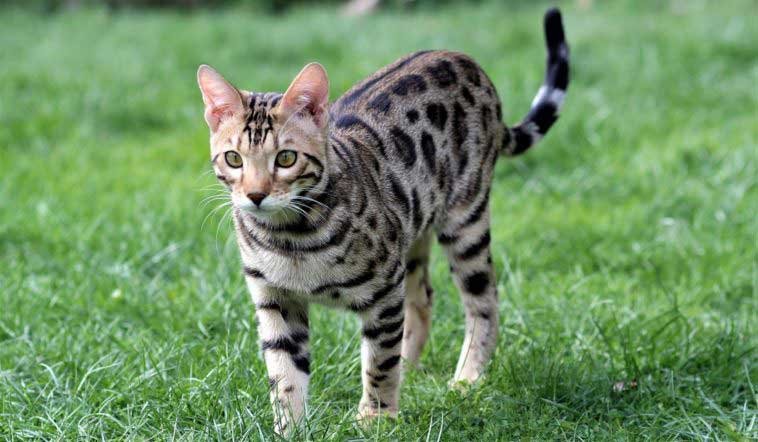In this article, I will teach you the 2 essential things to know to understand your cat’s body language!
Humans are really lucky. We have the complex ability to communicate verbally and physically, which can facilitate the transition of a message. On the other hand, cats have developed a complex communication system with some physical cues to express to humans what they want.
Understanding your cat is important to live harmoniously with him. We can’t understand everything, but there are two essential things to read your cat’s body language: his tail and his head!
1- Understanding your cat’s tail language
A cat’s tail can tell us so much more than we might initially realize.

1- Low tail, “nonchalant” = your cat is neutral.
2- Tail raised up, hooked at the tip (looks like a question mark) = Friendly, curious!.
3- Bristled = your cat is aggressive and in a threatening position.
4- Bristled and turned backward in the shape of bridge = your cat is preparing for an offensive! usually, his body will be directed towards the front.
5- Bristled and returned to the back = your cat is in-game mode and/or excitement!.
6- Bristled and held between the legs = your cat is scared! he is afraid, and his body will tend to flatten backward, in recoil mode. This shows that your cat is submissive and probably wants to be left alone.
7- Low and gently or slowly swinging = your cat is annoyed.
2- Understanding your cat’s head language
The Eyes
Cats are huge on body language, so the first thing you can look at is your cat’s eyes.
1- Dilated pupils = your cat is excited, alert
Slit pupils = your cat is in hunting mode …
2- Between two = your cat is neutral.
3- The brightness also plays a role in the shape of the pupils. When there is a lot of light, the pupils of the cat will be narrow, while in low light they will be dilated. So if your cat has fully dilated pupils in full light, it is that it is in excitation mode (or intensely stressed …).
The Ears
1- Pointed forward = your cat is neutral, or friendly, and maybe looking for some interaction with you.
2- Sideways, horn-shaped = your cat is annoyed, even downright angry and ready to attack.
3- Pressed back or sideways = your cat is scared, and/or he is in a defensive position. Ears in this position can be a message that you should stay away.
Understanding your cat’s body language will help you be a good friend and companion.







